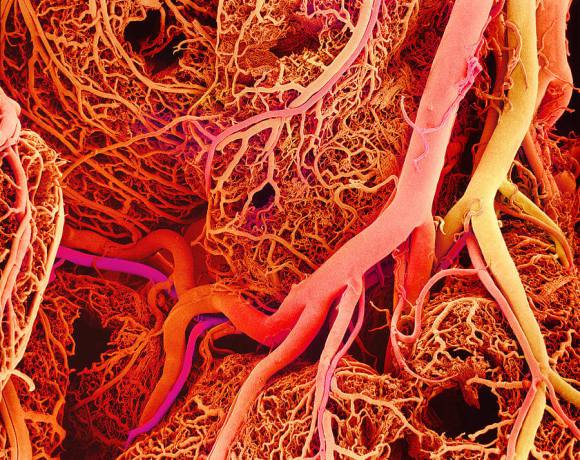Frequently Asked Questions: Vessel Chambers
This Frequently Asked Questions document has been designed to help answer some of the most asked questions by people newer to vessel chambers.
CHOOSING A CHAMBER
1. How do I choose a chamber that is best suited to my applications since LSI offers several different models?
- Call us. We are happy to discuss your research needs.
- Decide whether you want to run experiments on one or two vessels at a time. A dual vessel chamber enables you to:
- Test a second, equilibrated vessel after the experiment on the first vessel has finished or is equilibrating from exposure to an agent.
- Connect the two vessels as in a bioassay.
- Compare responses of two vessels of different sizes, from different vascular beds, or superfused and/or perfused with different agents.
- Select a chamber that has the unique features required by your experiments from the table below.
- Select a chamber which has the unique features required by your experiments from the table below:
Desired Features | Chambers |
Small volume for using peptides or expensive agents | CH-1-LIN-SH |
Work with fluorescent markers (calcium, pH, etc.) where objectives have a short working distance | CH-1-LIN, CH-1-LIN-SH, CH-1, CH-1-SH, CH-1-AU, CH-1-AU-SH, CH-1-R, CH-2, CH-2-SH |
Enable a large diameter objective (e.g., confocal) to be placed very close to the vessel | CH-1-LIN, CH-1-LIN-SH, CH-1, CH-1-SH, CH-1-AU, CH-1-AU-SH, CH-1-R, CH-2, CH-2-SH |
Self-heating capability for heating the bathing solution | CH-1-LIN-SH, CH-1-SH, CH-1-AU-SH, CH-2-SH |
Quick freeze or rapidly fix vessels | CH-1-QT |
Release neurotransmitters from nerve varicosities using platinum stimulation electrodes | CH-1-AU, CH-1-AU-SH, CH-1-R, CH-2, CH-2-SH; with optional STIM-1, STIM-2, or STIM-MYO platinum stimulation electrodes |
Rotate or invert a cannulated vessel and make confocal observations | CH-1-R |
NON-SUPERFUSED CHAMBERS
2. Do all chambers require superfusion of the vessel to maintain temperature and pH?
No, our self-heated packages (CH-1-LIN-SH, CH-1-SH, CH-1-AU-SH, CH-2-SH) include a thermistor temperature sensor (THRS) and temperature controller (TC-09S, TC-09D), allowing for regulation of the bath temperature when using buffers like HEPES or MOPS. All of our chambers (CH-1-LIN, CH-1, CH-2, CH-1-AU) have a heater block built into the chamber base, so you can always add on self-heating capability to your chamber at a later time if you chose not to purchase the self-heated chamber package.
BRANCHED VESSELS
3. Can I make measurements on small vessels that have branches?
Some vascular beds from which small vessels are dissected have smaller side branches that lie between the cannulated vessel ties. These branches could cause leaks in a pressurized vessel. They must be located and carefully tied off while visualizing them under high power—perhaps requiring use of a compound microscope for higher magnification than a dissection microscope.
CANNULAE
4. Can I draw my own cannulae, or is it necessary to buy them from LSI?
Yes, you may draw your own cannulae. We can supply borosilicate tubing if you have access to a micropipette puller and grinder. If you prefer to purchase cannulae, LSI stocks a wide range of cannulae sizes, and we can always custom make them to suit your needs.
5. What size cannulae are best to use?
The size is not important when blind-sac experiments are to be done. However, for perfused vessel experiments, we recommend roughly matching the outside tip diameter to the lumen diameter of the vessel. For perfused artery experiments, it is also necessary to closely match the proximal and distal cannulae tip diameters to each other. We offer custom cannulae sizes to suit your needs.
COVERSLIP REPLACEMENT
6. What cement is recommended for sealing coverslips in the chamber?
A flowable windshield sealer—Dow Corning #734 is best. It can be obtained from an automobile supply store, or from VWR.
7. How do you replace a broken coverslip?
Begin by removing all traces of the original coverslip and silicone adhesive. Use a razor blade to scrape away all traces of original silicone adhesive. Make sure the area where the new coverslip will mount is clean and free of debris.
Take a kimwipe or cloth that has been moistened with alcohol and wipe the area where you will install the new coverslip. Let the alcohol dry.
Place a fine bead of fresh silicone around the perimeter of where the new coverslip will install.
Lay the new coverslip in place, applying a gentle downward pressure on the center of the glass with your finger. Be sure to wear gloves so as to avoid getting smudges on the new coverslip.
Let the silicone cure overnight. The next day, your chamber will be ready for use.
